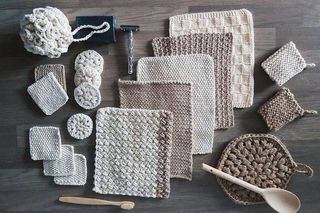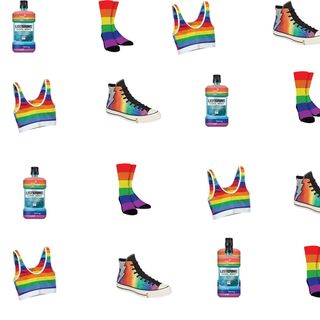
Instagram Has Diluted Zero‑Waste Living to an Aesthetic
True reuse may not look photogenic, but it still needs to be seen.

The zero-waste movement is one of those phenomenons that make for a long, pleasant Instagram-thumb-workout. Glass, wood, fresh produce, minimalist palettes, and a sparse mood make the lifestyle seem both just within reach, and tantalizingly aspirational. When the Earth’s slow-rising inability to support human life becomes a constant undercurrent in our collective consciousness, wastage is a serious guilt trip and plastics are the Devil. Enter a minimalist lifestyle that affords you both aesthetic satisfaction, savings, and tongue-in-cheek moral superiority over wasteful debauchers who would dare buy single-use plastics. Honestly, I was sold on the dream — until I figured what it would actually cost me.
For the uninitiated, The Zero Waste International Alliance defines zero waste as, “the conservation of all resources by means of responsible production, consumption, reuse, and recovery of products, packaging, and materials without burning and with no discharges to land, water, or air that threaten the environment or human health.” This is the posh equivalent of parsimonious parental practices like turning old t-shirts into mops, saving plastic bags in an endless loop of plastic bags and selling raddi (used papers). Of course, nobody would dare look like that on social media — very few of our creative director milieu could spin rainbow filters reflecting off milk packets as aesthetic. Thus, there’s glass, steel, and wood — more durable, but a significant dent to the bank account nevertheless. Even toothpaste, the sort of resource everyone’s taken for granted, costs five times more when it’s created via organic ingredients and zero-waste methods.
So, does every new zero-waste acolyte shell out half their wallet replacing plastic with wooden spoons and mason jars? Obviously not, because that’s financially irresponsible and symptomatic of peer pressure. To create a circular economy i.e. a system that minimizes waste and makes the most of your resources, you must use and reuse what you already have until it falls apart before you invest in something new. Throwing out your old items before their life cycle has been exhausted just creates more waste. However, the Instagram zero-waste influencer will not showcase this process, because the sea of how to’s and gorgeously arranged fruits don’t exist to educate the zero-waste curious, but to create #inspo and rack up followers.
Related on The Swaddle:
Little Big Things: A 23‑Year‑Old’s Dedication to Zero Waste
Aparna Varma, one of the co-founders of the sustainable living resource Thriftwaale, said she also took time to understand that she didn’t have to get rid of all her plastic. Varma began living sustainably around last year and started Thriftwaale to create a space where zero-waste beginners could support each other. She said, “The whole [zero-waste] idea is only understood on the surface. Plastic is a beautiful medium. The problem is that it’s in excess and it is one of the many things that doesn’t complete its life cycle. When you talk about zero waste, what you actually talk about is completing the life cycle of a product; when you buy something, you make sure you’ve used it in all ways possible before you discard it.
“My problem with these aesthetic accounts is that they start showing their progress after they’re used to it,” she added. “So it seems like all fun and games. But what’s not mentioned is that it was a big lifestyle change — the person has put a lot of thought, energy and time into this.”
The problem with showcasing the best possible way zero-waste living could look, minus any context about the struggle it took to get there, is that it creates a pinnacle with no stairway to reach it. When the used plastics, the ratty old t-shirts, and other unphotogenic bits are cut out from a public zero-waste journey, it implicitly suggests that throwing out your old things and investing in the new is the right way to go — which is the antithesis of the circular economy.
What also often goes unmentioned, too, is that the zero-waste and sustainable living movement is dominated by and aimed at women, because taking care of the household is still seen as a woman’s job. Susan Dobscha, an academic who studies gender and sustainability, told Alden Vicker at Vox that the perfect glass pantries in zero-waste Instagrams were “the 1950s housewife’s idea of perfection. Back then, the pantry was perfect when they put all these fancy brands in. But now the narrative has shifted to make having the perfect house more labor intensive.” Vicker also mentions that carrying reusable cutlery, bottles, spoons, and straws — an action espoused by zero-waste lifestyle adherents — would never fly with men, who are used to carrying stuff in their pockets. Rather than a simple, mindful lifestyle, the public face of zero waste looks more and more like domestic perfection, thus turning away people who’d actually benefit from it most — busy or resource-constrained families, for example, or students.
Beyond being an unattainable standard, zero waste is also excess emotional labor. Refusing plastic takeout constantly in public settings, trying to make reluctant relatives or partners join in, and coping with barely controllable factors that lead to heavy environmental damage (e.g., taking flights or consuming meat/dairy) is just another day for many who choose the zero-waste path. Shubhashree, a long time zero-waste practitioner who also runs The Hungry Palette on Instagram, said, “I was out with a friend for a meal, and we ordered too much food, and we had to ask them to pack it. I felt awfully guilty because I hadn’t anticipated that and hadn’t carried my own containers, but I’m trying to make my peace with it by ensuring that I will use those plastic containers for storage or trinkets, or as a planter. In an ideal zero-waste world, I’d meet that friend for a meal at home, and this situation wouldn’t even arise, but aiming for perfection can leave you feeling drained, so I’m learning we must simply constantly try our best, and not be too hard on ourselves when we slip up.”
Related on The Swaddle:
Shubhashree added, “as long as we don’t lose sight of the end goal, it’s not too bad.” However, Varma remains a strong proponent of little habits making a difference. She said, “I would like to believe that my actions count because I feel less guilty, more content and notice consequences, like increased greenery and fauna, due to basic human action.”
While social upkeep as a peer-pressure response is now transparent when performed, the younger, more sustainable lot don’t care too much about optics.Rather than gleaming mason jars and steel razors, the minimal waste movement is at its most delightful and accessible when it’s a mirror image of Aparna Varma’s joy at turning old milk packets into henna cones, and Shubhashree’s fun illustrations about not being perfect 24/7. Sustainability and the circular economy should be unapologetically thrifty, should allow its followers to hold on to plastic till it falls apart, to do a little bit towards the environment, and should save them time, money and energy, minus pressure — just like it was always designed to be.
Aditi Murti is a culture writer at The Swaddle. Previously, she worked as a freelance journalist focused on gender and cities. Find her on social media @aditimurti.
Related


Corporate Investment in Pride Increases Visibility, But Doesn’t Expand Rights
